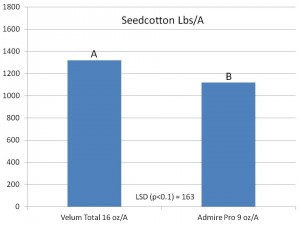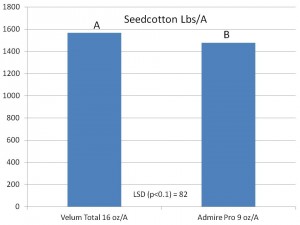Considerations for Nematode Management (Collins, Edmisten, Ellison, Reisig)
go.ncsu.edu/readext?403960
en Español / em Português
El inglés es el idioma de control de esta página. En la medida en que haya algún conflicto entre la traducción al inglés y la traducción, el inglés prevalece.
Al hacer clic en el enlace de traducción se activa un servicio de traducción gratuito para convertir la página al español. Al igual que con cualquier traducción por Internet, la conversión no es sensible al contexto y puede que no traduzca el texto en su significado original. NC State Extension no garantiza la exactitud del texto traducido. Por favor, tenga en cuenta que algunas aplicaciones y/o servicios pueden no funcionar como se espera cuando se traducen.
Português
Inglês é o idioma de controle desta página. Na medida que haja algum conflito entre o texto original em Inglês e a tradução, o Inglês prevalece.
Ao clicar no link de tradução, um serviço gratuito de tradução será ativado para converter a página para o Português. Como em qualquer tradução pela internet, a conversão não é sensivel ao contexto e pode não ocorrer a tradução para o significado orginal. O serviço de Extensão da Carolina do Norte (NC State Extension) não garante a exatidão do texto traduzido. Por favor, observe que algumas funções ou serviços podem não funcionar como esperado após a tradução.
English
English is the controlling language of this page. To the extent there is any conflict between the English text and the translation, English controls.
Clicking on the translation link activates a free translation service to convert the page to Spanish. As with any Internet translation, the conversion is not context-sensitive and may not translate the text to its original meaning. NC State Extension does not guarantee the accuracy of the translated text. Please note that some applications and/or services may not function as expected when translated.
Collapse ▲Nematode-Tolerant Varieties:
Nematodes have become an increasingly important challenge in some fields since the loss of aldicarb a few years ago. However, our seed companies have helped combat this pest, through the release of some nematode tolerant or resistant varieties. Below is a list of varieties in which these companies have made claims to have nematode tolerance. There are several species of nematodes that adversely affect growth and yield of cotton, therefore it is important to note that these varieties only convey tolerance to root-knot nematodes. Due to the inconsistent and variable effects of nematodes and associated interactions with environmental influences on cotton yield, we generally recommend that growers evaluate yield potential of nematode-tolerant varieties regardless of the presence or absence of nematodes in variety trials. If nematodes are problematic in your fields, the company’s claims for tolerance could minimize the adverse effects of nematodes. However if nematodes aren’t as problematic as you would expect, choosing a high-yielding nematode-tolerant variety could still allow for high yields to be achieved . In other words, growers shouldn’t choose lower yielding varieties simply because they may have nematode tolerance. Therefore, when selecting varieties for nematode-problematic fields, growers should choose high-yielding varieties with nematode tolerance in case nematode pressure is lower than anticipated. Many of these root-knot nematode-tolerant varieties have appeared in trials over the past couple of years. As seen from the results of NCSU Official Variety Trials, which are conducted in environments with very low nematode pressure, there are some nematode tolerant varieties that are competitive with the more widely-planted varieties. The NC Cotton Variety Performance Calculator (https://trials.ces.ncsu.edu/cotton/) can be used to evaluate performance of these and other varieties. The calculator can also be found on the NCSU Cotton Portal Website (https://cotton.ces.ncsu.edu/).
Varieties Tolerant to Root-Knot Nematodes (as claimed by each company):
Deltapine 1454 B2RF
Deltapine 1558 B2RF
Dyna-Gro 2355 B2RF
Phytogen 417 WRF
Phytogen 427 WRF
Phytogen 487 WRF
Stoneville 4946 GLB2
Velum Total:
Velum Total is a relatively new in-furrow insecticide/nematicide product that contains imidacloprid (same active ingredient as found in Admire Pro) and fluopyram (a fungicide with nematicide properties). It is important to note that the concentration of imidacloprid in highest labeled rate of Velum is slightly less than that found in the highest labeled rate of Admire Pro, which is important to consider when combating thrips. It is also important to note that to date, there is very little replicated data in NC with regard to this product and its control of nematodes. With that said, there were a few on-farm trials conducted in 2015 that showed some promise with this product. Below are the results from two trials conducted in Northampton county during 2015. In both case, Velum at 16 oz/A was compared to Admire Pro at 9 oz/A (with regard to imidacloprid only, this rate of Velum was equivalent to roughly 7.5 oz/A of Admire Pro). These treatments were replicated at least 8 times in fields with very sandy soils and a history of nematode problems. In both cases, thrips pressure was relatively minor. As seen in the graphs below, seedcotton yields associated with Velum Total were statistically higher than that of Admire Pro at p<0.1. Research in Dr. Edmisten’s program during 2015, suggested that Velum may not result in positive yield responses in very low yielding environments and/or when nematode pressure is minor. Collectively, this is very limited data, which should be considered before widespread adoption, however this limited data does suggest that Velum may help combat nematodes in problematic fields.




